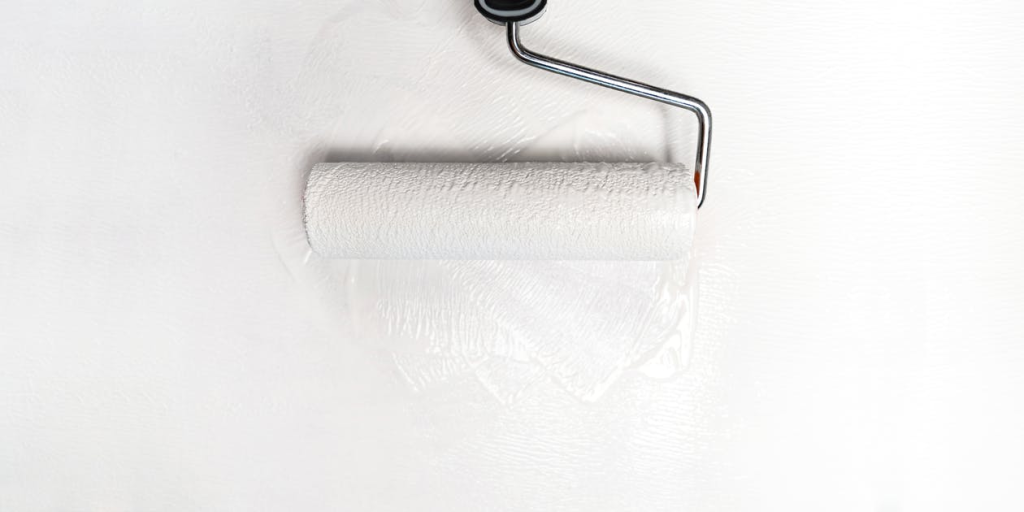
Yes, painting ceilings and walls concurrently is perfectly fine. To save money, consider using leftover white ceiling paint as a primer in some cases. However,remember that ceiling paint typically lacks color variety,making it suitable primarily when a white top coat is desired due to limited color options.
Will Ceiling Paint Work on teh Walls?
Ceiling paint isn’t the same as regular interior paint. Standard wall paint is lighter and less dense. This means it tends to drip when used on ceilings. While you *could* use your wall paint, it’s better to choose paint specifically designed for ceilings. Keep reading to learn more about ceiling paint and its best uses.
latex paint is often a safer, more environmentally conscious choice compared to oil-based options. Its flexibility makes it ideal for walls and ceilings after it fully dries. A common practice among users of water-based paints is cleaning brushes, tools, and spills with simple soap and water.
What Makes ceiling Paint Different From Regular Paint?
ceiling paint and flat paint aren’t always the same. However, most ceiling paints are flat. Flat paint has a non-reflective finish. It also has more pigment than other paints.This means it covers existing colors well.
Flat paint is designed to blend seamlessly into its surroundings, avoiding drawing focus. Like ceiling paint, flat white excels at concealing imperfections. Think of it as a masking agent. It’s ideal for subtly hiding minor wall damage without full repairs.This includes things like fingerprints, nail marks, and small dents. Flat paint’s light-absorbing quality makes these flaws nearly invisible, even up close.
Using a dark, smooth paint is a great way to hide damaged walls! Flat white paint, like ceiling paint, works well. Though, wall and ceiling flat white paints differ in thickness. Ceiling paint is less runny than other flat white paints sold today.
Is it Possible to Mix the Ceiling with Regular Paint?
Mixing ceiling and wall paint isn’t forbidden. However, ensure both paints are the same type as the existing coat. For example, mix latex with latex, not latex with oil.
Creating a custom color blend for both your ceiling and walls has limited benefits. While mixing wall and ceiling paint to achieve a unique ceiling shade seems appealing, the wall paint’s properties might cause drips due to its thinner texture. Consequently, the final result might not dry as was to be expected.
For optimal results,use ceiling paint as a base coat and wall paint as a top coat. This method leverages the strengths of both types of paint. It offers the durability of ceiling paint on walls, enhanced by the aesthetic appeal of wall paint, leading to a stunning finish.
can Ceiling Paint be Used as a Primer on Walls?
Flat ceiling paint works well as a primer for walls, doors, and trim.It’s easy to sand, letting you apply a glossier topcoat later.Semi-gloss or high-gloss paints are ideal for doors and trims. They are easier to clean and maintain.
Many remodeling experts and painting pros now favor this approach.It’s especially helpful when resources are limited, and a trip to the store isn’t feasible. Instead of discarding leftover ceiling paint, people are repurposing it. They’ve discovered a budget-friendly method that yields superior results. You can use ceiling paint as a wall primer, but it requires multiple coats for full coverage. This process can be time-consuming and labor-intensive.
What Happens When Ceiling Paint is Not Used for the Ceilings?
Skipping ceiling paint can be risky. Regular paints are often thinner and drip easier. This can create a messy situation if you’re not careful. protect your furniture and floors well to prevent paint splatters. Also,wear safety glasses to keep paint out of your eyes during the project.
Opting for a thicker ceiling paint simplifies your work. It resists drips better and eases future cleaning. Many ceiling paints also effectively cover tiny cracks. They hide ceiling imperfections better than standard paints. This is crucial if you have textured ceilings, like those in older homes.
What Type of Paint is Suggested for Walls?
Acrylic paint remains a top choice for walls in 2025. It provides superior brightness compared to latex and oil-based options. Plus,it dries faster,has a milder odor,and boasts exceptional durability.
Emulsion paints are water-based, making them a top choice for interior walls. They’re almost odorless and dry rapidly.Plus, they contain very few volatile organic compounds (VOCs).
Using water-based paints is common and safe for home projects. These paints offer versatile request methods. Paint consists of pigments mixed in a liquid, enabling diverse techniques. While water is the main ingredient in latex or acrylic latex paints, they might also contain chemicals.
